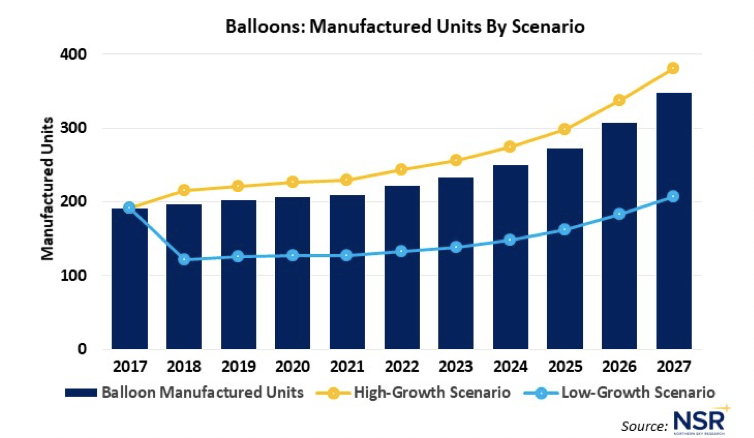HAPs and Mishaps
Some of the best characteristics form airborne and satellite systems can be implemented into HAPs to provide a range of apps, but mishaps remain a challenge that operators and manufacturers need to overcome. Google Loon, Worldview Enterprises, and Raven Aerostar are the three most prominent names in the High-Altitude Balloons market, and they have demonstrated effectiveness of balloons across communications, remote-sensing, and adventure tourism applications. Google Loon succeeded in providing basic Internet services to hurricane struck regions in Peru and Puerto Rico, WorldView Enterprises succeeded in capturing Very High-Resolution (VHR) imagery comparable to large satellites, and Raven Aerostar succeeded in manufacturing a reliable balloon for the Red Bull Stratos manned stratospheric mission. While their success stories made big headlines, their failures have arguably made bigger ones:
- Kenyan farmer threatens Google with a lawsuit for balloon crash
- WorldView test balloon blast costs $200,000 in property damage
- Raven Aerostar balloon crashes into frozen wolf lake Weyauwega at speeds exceeding 113 km/hr
The three organizations have a high Technology Readiness Level (TRL) in comparison to their adversaries within this market. Yet, they were cumulatively responsible for five balloon accidents within the last fifteen months. NSR’s High-Altitude Platforms (HAPs) 2nd edition report suggests the balloon market is the strongest HAPs market, leveraged by low unit costs per kg in the stratosphere compared to airships and pseudo-satellites. Nevertheless, a significant restraint faced by this market is the negative press and public opinion it receives from frequent accidents and political controversies involving millions of taxpayer dollars. NSR expects these restraints to pave the way for much stricter regulations and potential shrinkage in investment from socially-minded investors.
Regulations cannot keep pace with the rate of HAPs development, and they represent market barriers when the associated technology begins to get out of control, in terms of quantity or quality. This was seen in the small satellite market with de-orbiting regulations, then in the UAV market with weight restrictions on payloads and controlled airspace flight, now in the crypto-currency market with outright bans. A similar phenomenon is likely to come into play within the balloons market, as the number of operational and testing units begin to inflate, thereby expanding the probability of accidents, even fatal ones.

Many questions remain answered and could prove detrimental to this fast-developing market:
- Will regulators ban operations in densely populated regions?
- Will restrictions come in the form of launchable weight?
- Will operators be compelled to incorporate greater maneuverability within their platforms?
The answers to these questions remain uncertain, but it is certain they will come one way or another and serve as a growth restraint for balloons. As such, NSR forecasts balloon units to grow at a 7.1% CAGR by 2027 but considers a potential low growth scenario at a much lower 0.7% CAGR, where stringent regulations are enforced, with a few balloon programs stalling and a couple of others ending.
Bottom Line
Regardless of the social novelty and commercial feasibility balloon operators provide, a growing number of accidents will lead to stringent regulations and possibly major lawsuits in case of fatal accidents, denting their feasibility, reputation and viability of promising high-altitude applications. A highly regulated balloons market will lead to greater R&D spending to satisfy the balloon certification requirements. The possibility of regional bans could also lead to lower revenue opportunities. Adherence to all current and future regulations will be vital for HAPs players to thrive…and avoid mishaps.
